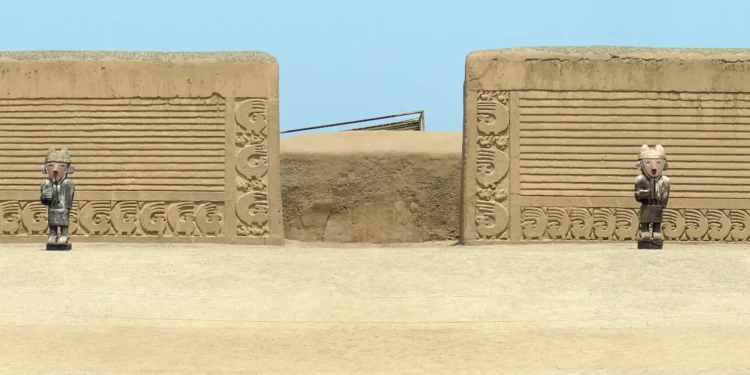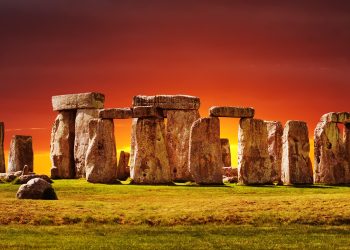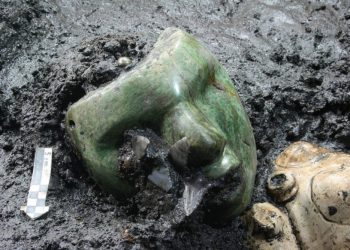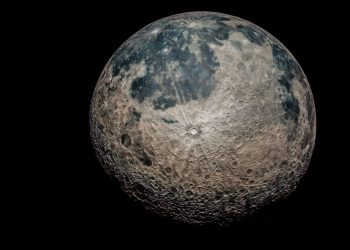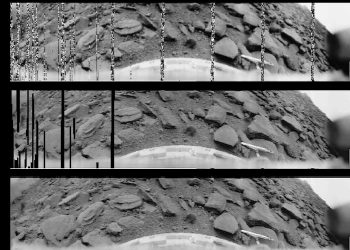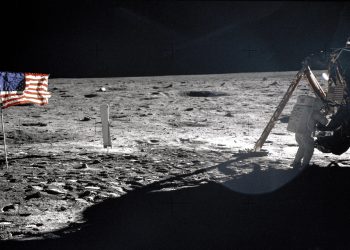Before Machu Picchu captured the world’s imagination, there stood another capital, older, larger, and built from sunbaked earth. It rose from the desert near the Pacific, and for centuries, it thrived. Today, it is slowly being erased by wind, salt, and time.
Its name is Chan Chan. Once the seat of the powerful Chimú kingdom, it remains the largest adobe city ever built, a sprawling, labyrinthine wonder of walls, courtyards, and ceremonial enclosures that stretched over 20 square kilometers. Despite its scale and significance, this city has remained in the shadows, overshadowed by Inca stonework and tourist routes that rarely lead north.
But Chan Chan tells a different story. One of resilience, ingenuity, and a civilization that flourished in a place where survival was never guaranteed.
A desert capital built from dust and memory
The Chimú Empire emerged around the year 900 CE on the northern coast of what is now Peru. They inherited and absorbed cultural knowledge from earlier civilizations like the Moche, but developed their own artistic style, political system, and engineering solutions that were well adapted to the arid coastal plain.
Chan Chan, their capital, was a marvel of organization. Its walls, some towering over 9 meters high, were built from adobe, a mixture of mud, straw, and water, molded into bricks and dried in the sun. These walls protected not just homes, but palaces, administrative centers, storage facilities, and temples. Unlike the Inca, who built upward into the Andes, the Chimú expanded outward into the desert.
Nine large citadels, or ciudadelas, form the heart of the city. Each of these rectangular compounds likely belonged to a specific Chimú ruler and functioned as a royal complex. Inside each were open plazas, burial platforms, storerooms, and water reservoirs.
The city was designed for climate control and spiritual symbolism. Narrow corridors channeled ocean breezes, and walls were often decorated with stylized fish, waves, and birds — motifs that reflected both the Chimú worldview and their reliance on marine resources.
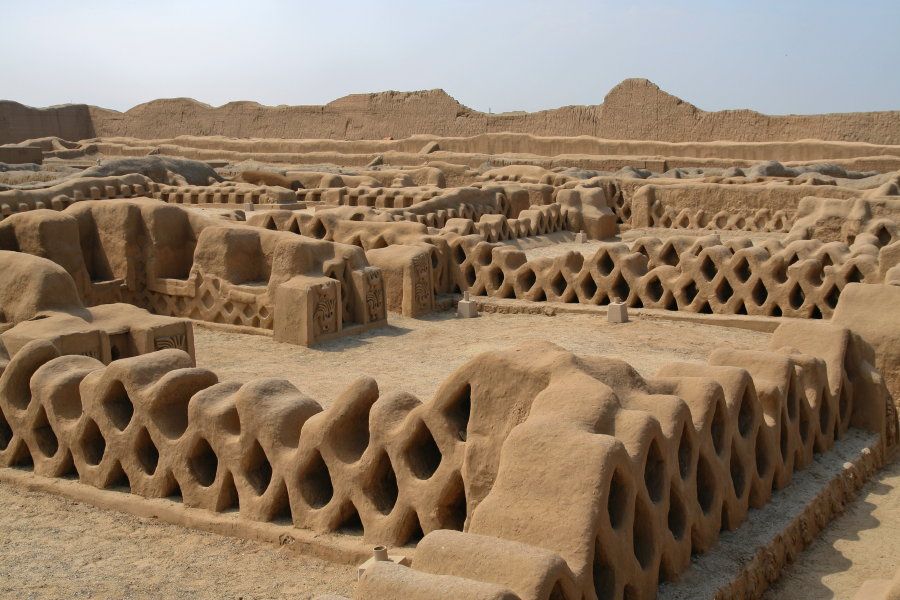
How did a city this large survive in the desert?
One of the most impressive achievements of the Chimú was their mastery of water. The region around Chan Chan receives less than 10 millimeters of rain annually, yet the city supported tens of thousands of residents.
The answer lay in a vast system of canals, some stretching more than 70 kilometers, that brought fresh water from the Andean foothills. These irrigation channels not only supported the capital but also turned arid fields into fertile agricultural land. Cotton, beans, squash, and maize grew in abundance, sustaining both the population and a highly organized economy.
Water was life in Chimú culture, and its control was a symbol of power. Rulers were buried with miniature irrigation tools, and rituals were often tied to the rhythms of water movement and the sea. Control of this lifeblood may have been one of the reasons Chan Chan remained the center of a kingdom that endured for centuries.
Before Machu Picchu, Chan Chan ruled the coast
When most people think of pre-Columbian Peru, they think of the Inca. But before the rise of Cusco, the Chimú controlled nearly 1,000 kilometers of coastline. Their influence extended across valleys, deserts, and dozens of city-states. They excelled in metallurgy, producing delicate gold and silver objects. Their ceramics were often molded into realistic human and animal figures. And their weaving techniques were among the most advanced in the Americas.
Chan Chan was the heart of this empire. With its massive walls and organized layout, it reflected a centralized, hierarchical society that relied on both religious authority and military strength.
The city’s population may have exceeded 40,000 people at its height. There were artisans, fishermen, priests, engineers, and traders, all functioning within a complex system that was centuries ahead of its time.
But unlike the Incas, the Chimú never built with stone. They used what the desert gave them. That decision made their city easier to build, but also more fragile in the face of time.
What led to its fall?
Around 1470 CE, everything changed. The Inca, led by Tupac Inca Yupanqui, swept through the north and conquered the Chimú after a prolonged siege. The Chimú ruler, Minchancaman, was taken to Cusco, and much of the region’s autonomy was lost.
The Incas respected some of the administrative systems of their conquered rivals, but they dismantled Chan Chan’s power structure. The city never fully recovered. By the time the Spanish arrived just a few decades later, Chan Chan was already fading.
Its adobe walls began to erode. Its canals clogged and dried. Without regular maintenance, the city began its long slide into obscurity.
An important archaeological site
Chan Chan was shaped from nothing but earth and effort, yet it remains one of South America’s greatest archaeological treasures. It was recognized as a UNESCO World Heritage Site in 1986, but that honor came with a warning. The site is in danger. Harsh El Niño rains have melted sections of its walls. Wind-driven salt wears away at its fragile surfaces. Looters and the sprawl of modern life keep pushing at its edges.
Still, the city keeps giving. Beneath layers of sand and time, archaeologists have uncovered stunning finds. Murals with sea otters, birds, and wave patterns. Entire ceremonial chambers that once echoed with rituals. Even the faint remains of colored paint still cling to some walls, hinting at a place that was once full of life and color, not just dust and silence.
Chan Chan isn’t just a ruin. It’s a place to learn. It forces us to rethink what a desert civilization could accomplish. It shows us how deeply connected architecture, power, and the environment once were. Chacn Chan is there to tell us that even before Machu Picchu, there were other cities that left a mark on the world, even if history let them fade.
Saving what’s left is not easy. Protecting Chan Chan takes time, resources, and attention. But the momentum is building. Sustainable tourism, led by local voices, is growing. Peruvian researchers and nearby communities are stepping up to preserve what they can, not just the walls, but the knowledge they carry.
Today, visitors won’t see perfect stone temples or gleaming altars. They’ll see weathered walls and quiet corners shaped by wind. They’ll walk through dust and silence. But if they pause long enough, they might feel something deeper, the presence of a city that once ruled the coast.



